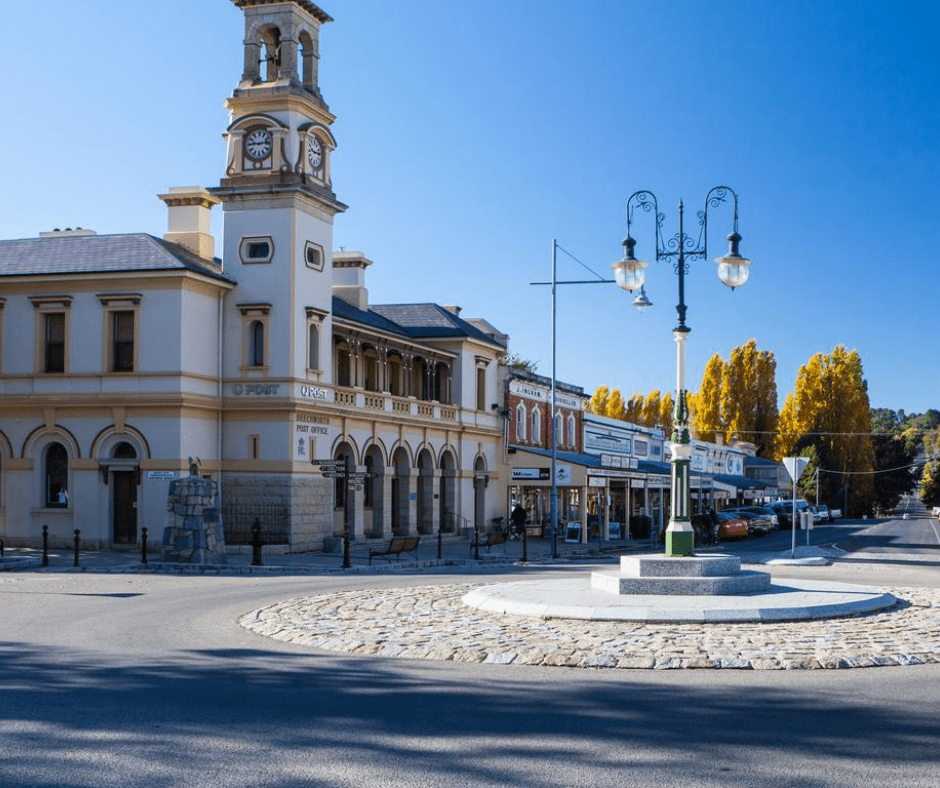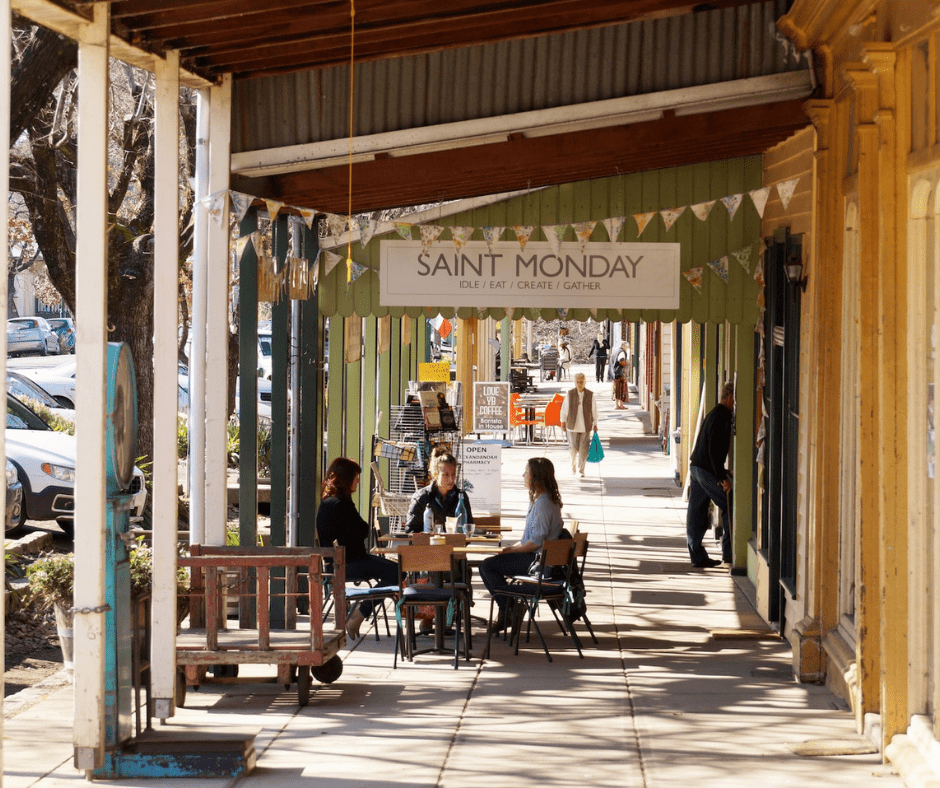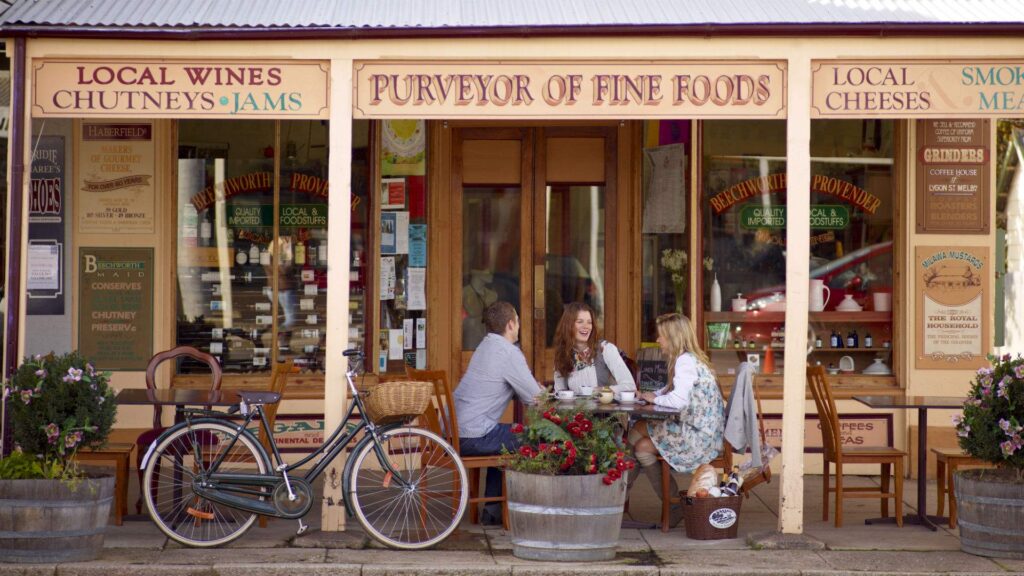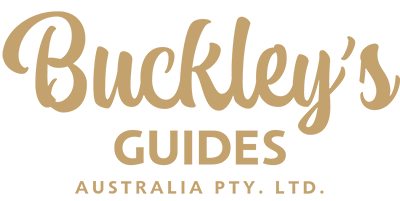

Beechworth & Yackandandah
Beechworth
Beechworth is a remarkably well-preserved historical town nestled in the northeastern region of Victoria. It gained prominence during the mid-1850s gold rush, and as of the 2021 census, Beechworth had a population of 3,290.
The town boasts numerous impeccably preserved historical buildings, and over time, it has transformed itself into a sought-after tourist destination and a thriving centre for wine production.
Beechworth Parish and Township plans were developed, named, and authorised by George D. Smythe. He undertook this task after departing from his family estate near Liverpool in 1828 and later in Launceston, Tasmania in 1838. Originally, the area, which had been utilised for grazing by the settler David Reid, was sometimes referred to as Mayday Hills until 1853.
The Post Office in Beechworth opened on May 1, 1853, under the name Spring Creek, and it was subsequently renamed Beechworth on January 1, 1854. The Indigenous name Baarmutha was also associated with the area, although its origin and language are unknown.
Between 1852 and 1857, Beechworth experienced a gold rush, becoming a significant gold-producing region and a centre of government. However, its influence, wealth, and power were relatively short-lived. Notably, a group of early prospectors extracted a 14-pound (6.4 kg) pan of gold from the area, and another party managed to collect approximately 50 pounds (23 kg) of gold within a week. This led to a rush of people coming to the remote region. During the initial election campaign in 1855, one candidate, Daniel Cameron, rode a horse adorned with solid gold horseshoes. This extravagant event remains commemorated as the golden horseshoe festival and the horseshoe serves as the symbol of Beechworth.
Yackandandah
Yackandandah, known locally as “Yack”, is a quaint tourist town located in the northeastern region of Victoria. It is in proximity to the regional cities of Wodonga and Albury and is also near the popular tourist town of Beechworth. According to the 2021 census, Yackandandah had a population of 2,008.
Prior to European colonisation, the indigenous people of the area were the Dhudhuroa people, and it is said that the name “Yackandandah” originates from their language, meaning “one boulder on top of another at the junction of two creeks,” specifically referring to the intersection of the Yackandandah and Commissioner creeks.
The area was first opened up to European settlement when James Osborne acquired land at Osborne’s Flat in 1844. Following the discovery of gold deposits in 1852, Yackandandah became a gold mining centre known for its alluvial wet mining techniques.
The Yackandandah Post Office was established on June 13, 1856.
An old poem published in the Melbourne Punch on June 11, 1857, titled “The Lass of Yackandandah,” beautifully captures the charm of the area and its people. It reads:
“Let poets sing of English girls,
Their beauty and their candor;
Give me a sweeter nymph than all, –
The lass of Yackandandah.”
“She draws a cork with such an air,
No mortal can withstand her;
She turns a tap, and turns our heads, –
The lass of Yackandandah.”
O’Brien,
The Lass of Yackandandah – a Goldfield Beauty

